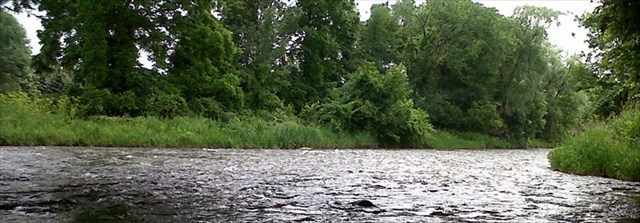Credit River - Andrea Doria Traditional Cache
Credit River - Andrea Doria
-
Difficulty:
-

-
Terrain:
-

Size:  (small)
(small)
Please note Use of geocaching.com services is subject to the terms and conditions
in our disclaimer.
Credit River - Shipwreck Series
Andrea Doria
July 26, 1956

There are many shipwrecks around the world. Some very famous and others not so. Each however has it’s own story to tell. As you travel along the Credit River doing this series of caches, we have highlighted a number of these shipwrecks. During low water levels on these parts of the Credit River, you need to be careful in a canoe or kayak so as you don’t wind up in your own shipwreck. Besides the many large rocks along the way, there are also some other obstacles such as dams which should be avoided. All of the geocaches in this series have been placed by tubing, inflatable boat or on foot by walking in the water along the Credit River. Whichever way you choose to search for these caches, use caution and common sense.
More information about this series can be found here: Credit River - Shipwreck Series
Andrea Doria
SS Andrea Doria was an ocean liner for the Italian Line (Società di navigazione Italia) home ported in Genoa, Italy, most famous for its sinking in 1956, when 52 people died (51 from immediate impact).
Named after the 16th-century Genoese admiral Andrea Doria, the ship had a gross register tonnage of 29,100 and a capacity of about 1,200 passengers and 500 crew. For a country attempting to rebuild its economy and reputation after World War II, Andrea Doria was an icon of Italian national pride. Of all Italy's ships at the time, Andrea Doria was the largest, fastest and supposedly safest. Launched on 16 June 1951, the ship undertook its maiden voyage on 14 January 1953. On 25 July 1956, while the Andrea Doria was approaching the coast of Nantucket, Massachusetts, bound for New York City, the eastbound MS Stockholm of the Swedish American Line collided with it in what became one of history's most infamous maritime disasters. Struck in the side, the top-heavy Andrea Doria immediately started to list severely to starboard, which left half of its lifeboats unusable. The consequent shortage of lifeboats might have resulted in significant loss of life, but the efficiency of the ship's technical design allowed it to stay afloat for over 11 hours after the ramming. The good behavior of the crew, improvements in communications and the rapid response of other ships averted a disaster similar in scale to that of the Titanic in 1912. 1,660 passengers and crew were rescued and survived, while 46 people died as a consequence of the collision. The evacuated luxury liner capsized and sank the following morning. This accident remains the worst maritime disaster to occur in United States waters since the sinking of the SS Eastland in 1915. The incident and its aftermath were heavily covered by the news media. While the rescue efforts were both successful and commendable, the cause of the collision with the Stockholm and the loss of Andrea Doria generated much interest in the media and many lawsuits. Largely because of an out-of-court settlement agreement between the two shipping companies during hearings immediately after the disaster, no determination of the cause(s) was ever formally published. Although greater blame appeared initially to fall on the Italian liner, more recent discoveries have indicated that a misreading of radar on the Swedish ship may have initiated the collision course, leading to errors on both ships.
Andrea Doria was the last major transatlantic passenger vessel to sink before aircraft became the preferred method of travel.
Additional Hints
(Decrypt)
Qrpba pbagnvare unatvat va ivar bs gerr ng gur rqtr bs gur jngre. -